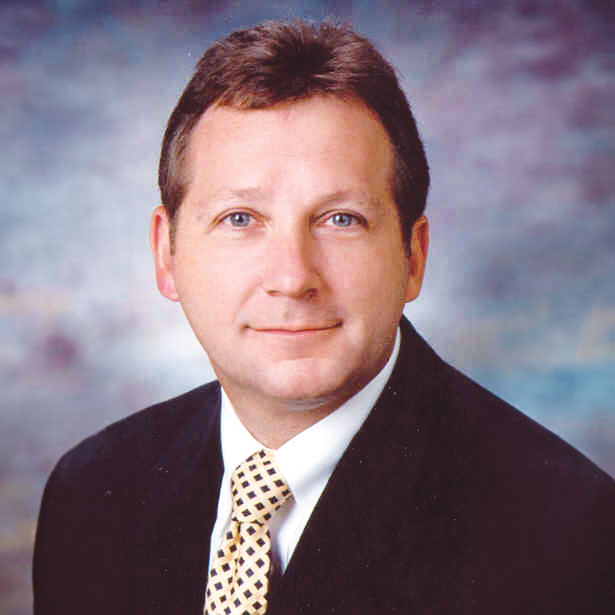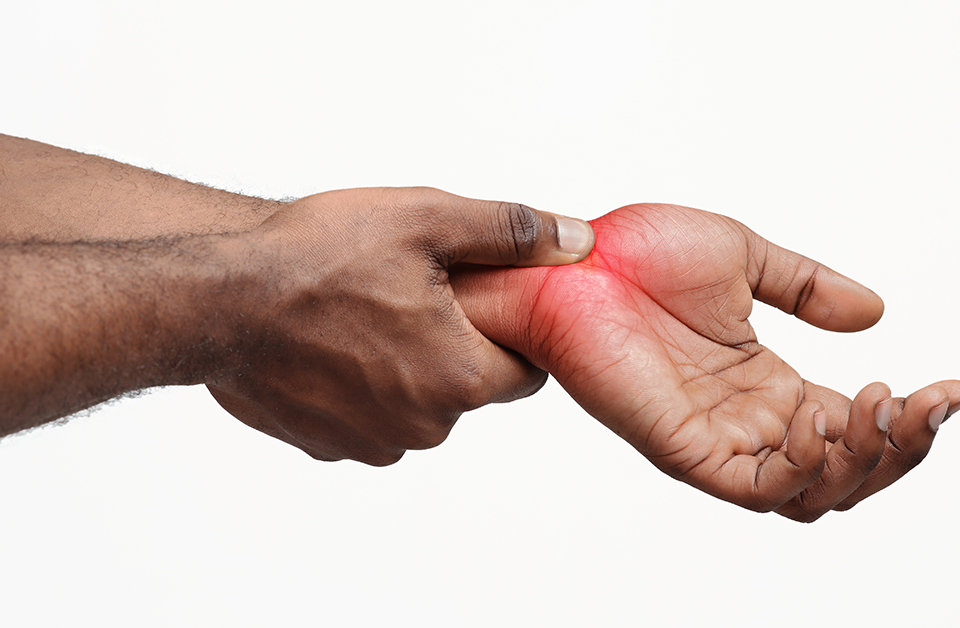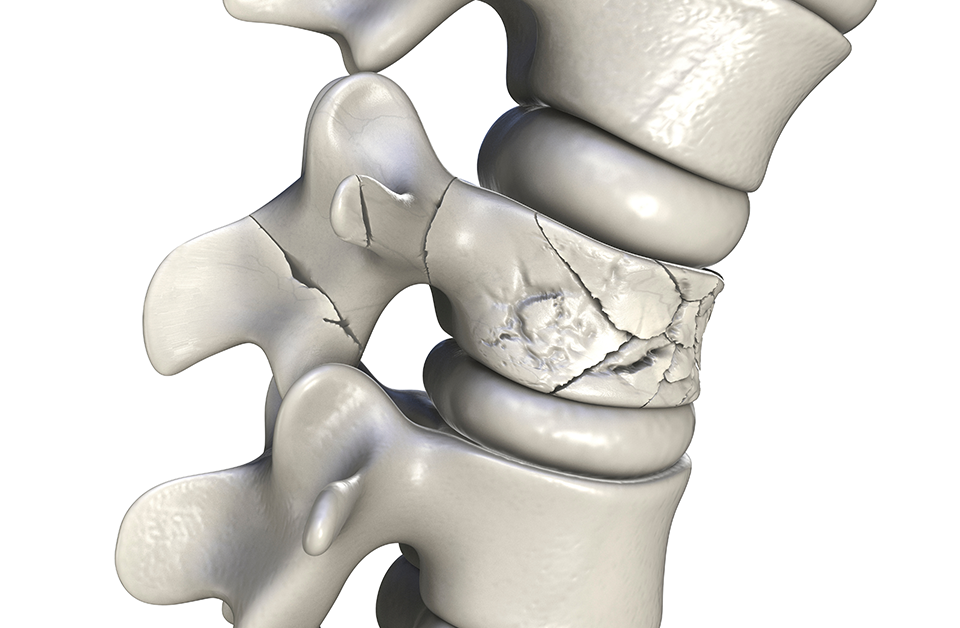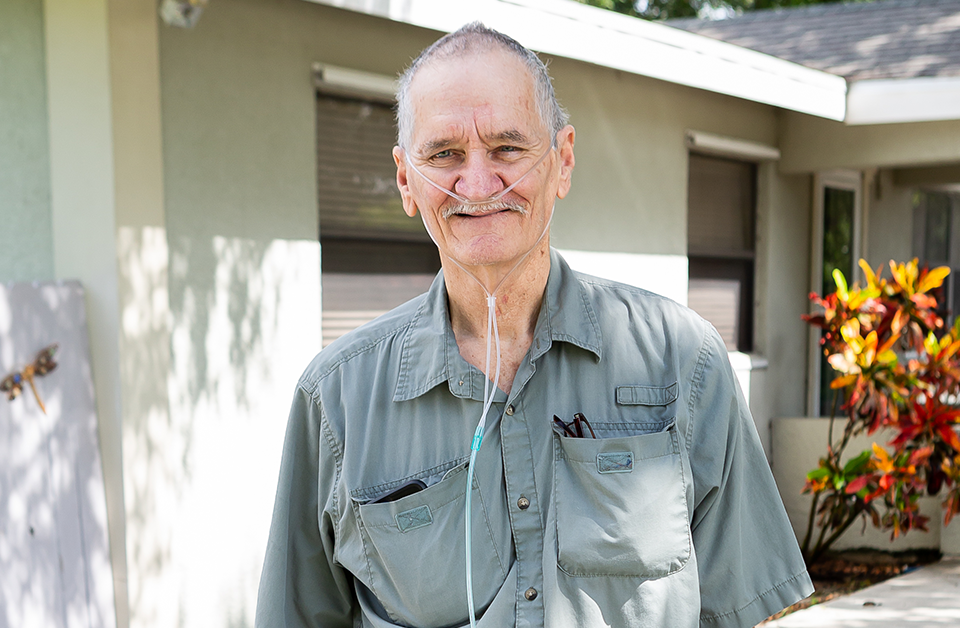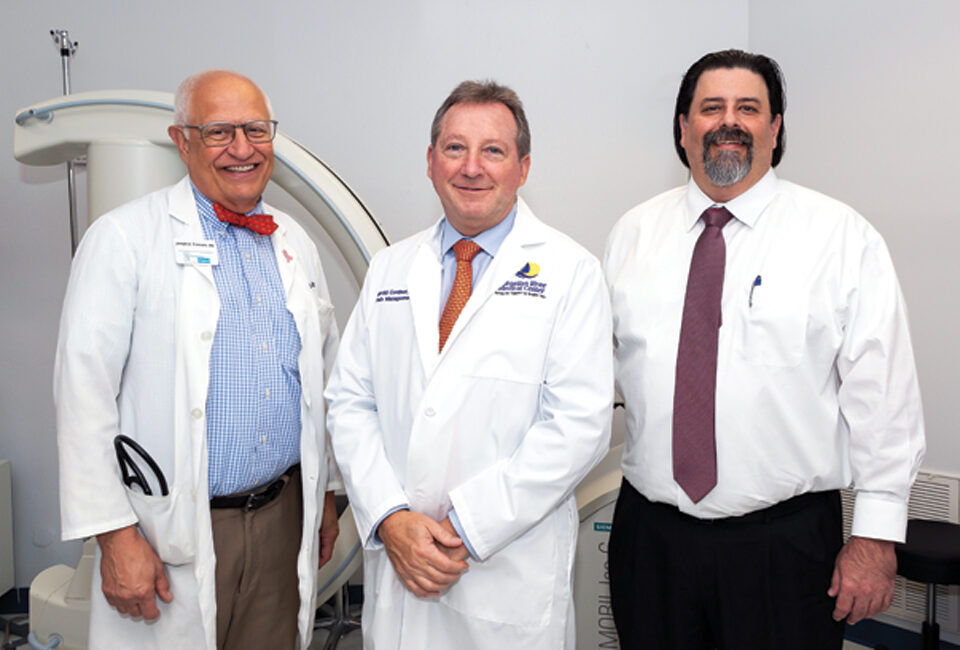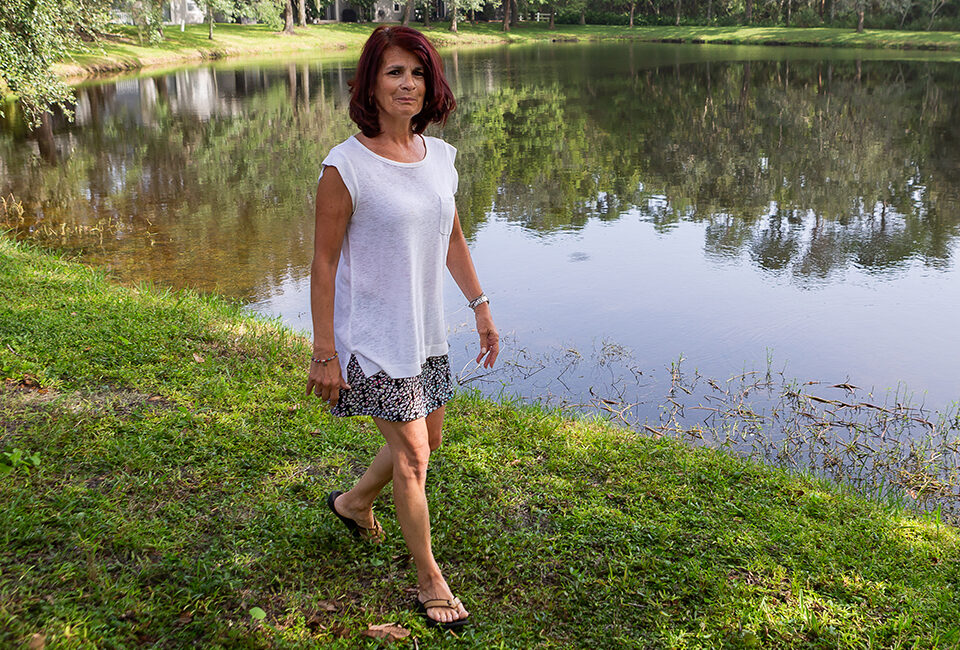In the early 1980s, when Peggy Alesso was deciding on a career path, nursing and teaching were among the most common professions for women. Peggy opted for nursing, which she practiced for nearly 30 years before retiring in 2012.
“Most of the time, I was a pediatric nurse,” Peggy elaborates. “I worked in a hospital, a doctor’s office and a school in Point Pleasant, New Jersey, where I’m from. The best part of my job was caring for the kids.”
For the past 25 years, Peggy and her husband have been snowbirds, traveling to Florida during the winter. During their stay in Florida in 2021, Peggy suffered an intense flare-up of pain from a chronic back condition.
“I’ve had lower back pain for years,” she shares. “I was diagnosed with spinal stenosis, and I have scoliosis as well. I basically ignored the pain until last year, when it became so bad it hampered my lifestyle. Standing and walking were next to impossible, and I couldn’t do the things I love to do, including golfing, fishing and riding my bike.”
Spinal stenosis is a narrowing of the spaces within the spine that creates pressure on the spinal cord and nerve roots, causing pain.
Scoliosis is a sideways curvature of the spine. It can sometimes put pressure on the spinal nerves that leads to pain, numbness and a tingling sensation from the back, down the legs to the feet.
“My pain was extreme,” Peggy continues. “When asked, I always said it was an eight on a scale of one to 10 because I’m not sure what a 10 could possibly feel like. Eight was enough. The pain was a very bad aching, and it was constant.”
Peggy’s pain was exacerbated by rheumatoid arthritis, a condition that causes the immune system to attack its own tissue, including that of the spinal joints. Pain medication eased her pain somewhat, but all other attempts to alleviate it failed.
“I received three injections into my spine that were supposed to help, but they didn’t do anything,” Peggy laments. “I tried physical therapy as well, but that didn’t do much either.”
Peggy was facing surgery when she saw an article in Florida Health Care News about Harold J. Cordner, MD. A board-certified pain management specialist at Florida Pain Management Associates, Dr. Cordner has an arsenal of noninterventional and interventional services for managing pain. One is spinal cord stimulation.
Multiple Targets
Conventional spinal cord stimulation, which has been around for more than 30 years, uses electrical waves to block pain signals in nerves. After examining Peggy, Dr. Cordner asked if she would consider participating in a study his practice was conducting to determine the effectiveness of a new form of stimulation programming called differential target multiplex (DTM) stimulation.
“Only 10 percent of the spinal cord is made up of nerve cells, or neurons. About 90 percent of the cells are glial cells. Historically, we have only targeted the neurons with spinal cord stimulation, so we were only addressing 10 percent of the spinal cord,” Dr. Cordner details. “Research has found that glial cells are responsible for creating and modulating chronic, severe pain.
“We can alter the activity of glial cells with certain medications and gene therapy. The goal of the study was to determine if we could normalize their activity from a chronic pain state to a non-pain state by stimulating them with different waveforms or pulse widths of electricity.
“Over 10 years, we did research to determine the exact combinations of electrical parameters to reverse chronic pain. We then performed a study on patients to compare conventional stimulation to the new DTM therapy.”
During the one-year study, half of the patients enrolled received DTM stimulation and half received conventional stimulation. The average patient in the study had experienced chronic back pain for more than 12 years and tried multiple treatments. The results of the study revealed the DTM patients received superior relief.
“About 51 percent of patients with conventional stimulation received 50 percent or greater pain relief,” Dr. Cordner reveals. “About 84 percent of patients in the DTM group achieved the same pain relief.
“When we consider profound responders, those that achieved 80 to 100 percent pain relief, 35 percent of patients in the conventional stimulation group reached this goal. In comparison, 69 percent of the DTM patients achieved 80 to 100 percent pain relief. These results are remarkable. They have never been seen before in any spinal cord stimulation study.”
Conventional spinal cord stimulation uses either one waveform or one frequency of electricity at a time. No other device can apply different parameters to different cells concurrently, Dr. Cordner explains.
“DTM stimulation is unique because it is designed to deliver different electrical parameters at the same time,” the doctor maintains. “DTM stimulation targets both the neurons and glial cells — multiple targets — at once for enhanced back and leg pain relief.
“This newer type of stimulation offers hope to those patients who did not respond to conventional spinal cord stimulation in the past or are not getting the pain relief they once did with conventional spinal cord stimulation.”
“We are conducting another study using DTM for patients with diabetic neuropathy, so if patients are interested in participating, they can call our office at (772) 388-9998 for a consultation.”
“Functional Again”
Before implanting a permanent stimulator, Dr. Cordner performs a weeklong trial in which a lead that conducts the electrical waves is introduced into the epidural space through a retractable needle. Peggy, who was in the DTM group in the study, underwent the trial.
“The trial run gave me pain relief, so we went ahead and implanted the permanent stimulator,” Peggy enthuses. “That was done in early spring, and it’s made a big difference in my life because I don’t have the pain I used to have.
“My pain level is usually about two out of 10 now, but it’s nothing like the eight that I was dealing with before, and that has allowed me to be functional again.
“I’m walking and riding a bike again, and I hope to start playing golf again soon, so I’m very satisfied with my treatment. While my back is not 100 percent, it’s much, much better. I’m very happy with it.”
Peggy is also happy with the pain management specialist who helped ease her chronic back pain.
“Dr. Cordner is knowledgeable and good at what he does,” she raves. “He’s very caring and specific about details. He explains things very well. What he tells you is clear and concise. I highly recommend him and Florida Pain Management Associates.”





